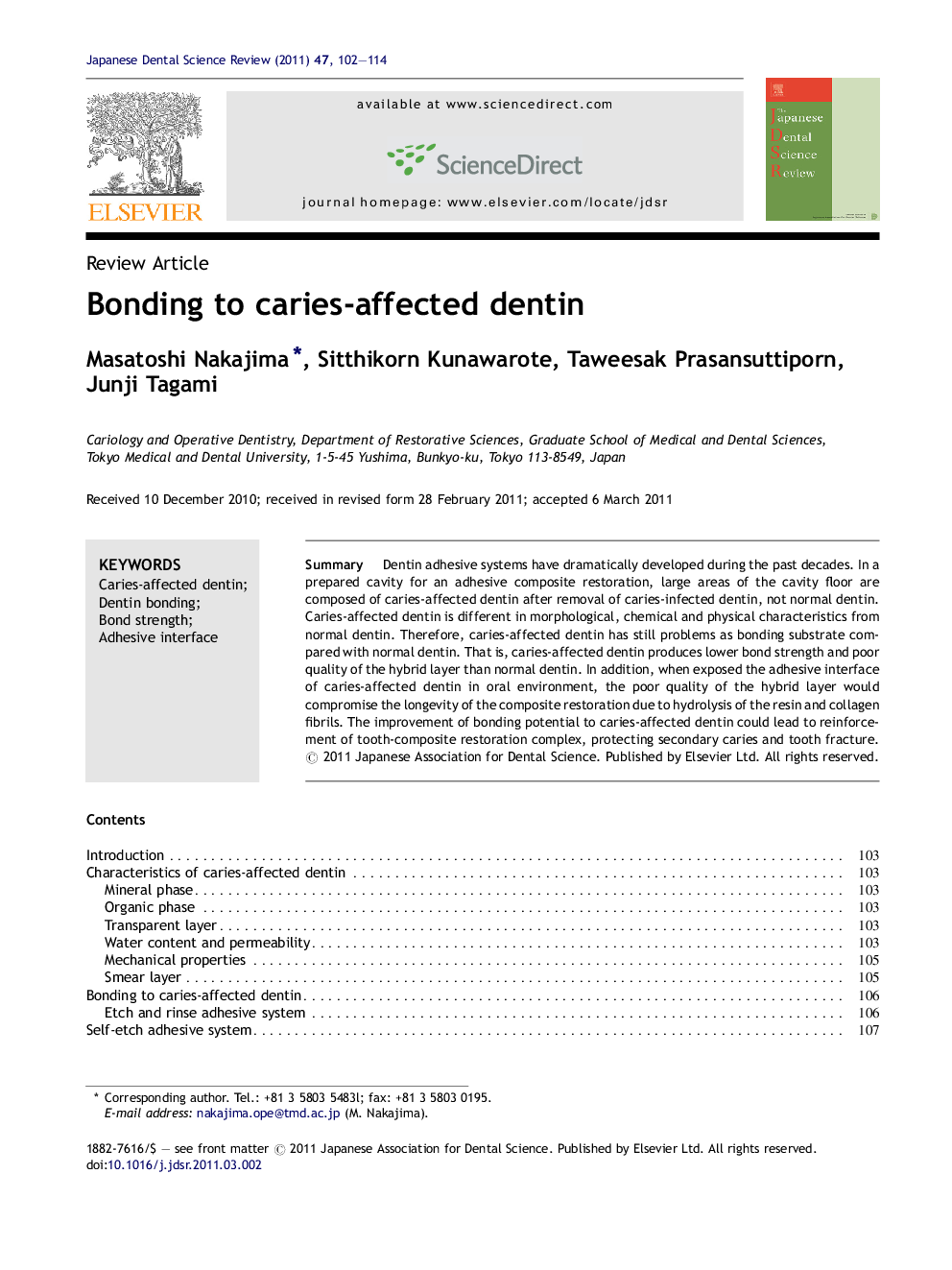| Article ID | Journal | Published Year | Pages | File Type |
|---|---|---|---|---|
| 3136895 | Japanese Dental Science Review | 2011 | 13 Pages |
SummaryDentin adhesive systems have dramatically developed during the past decades. In a prepared cavity for an adhesive composite restoration, large areas of the cavity floor are composed of caries-affected dentin after removal of caries-infected dentin, not normal dentin. Caries-affected dentin is different in morphological, chemical and physical characteristics from normal dentin. Therefore, caries-affected dentin has still problems as bonding substrate compared with normal dentin. That is, caries-affected dentin produces lower bond strength and poor quality of the hybrid layer than normal dentin. In addition, when exposed the adhesive interface of caries-affected dentin in oral environment, the poor quality of the hybrid layer would compromise the longevity of the composite restoration due to hydrolysis of the resin and collagen fibrils. The improvement of bonding potential to caries-affected dentin could lead to reinforcement of tooth-composite restoration complex, protecting secondary caries and tooth fracture.
